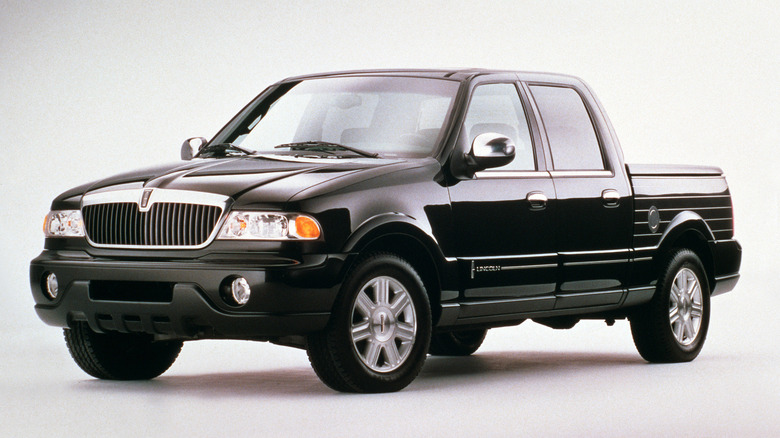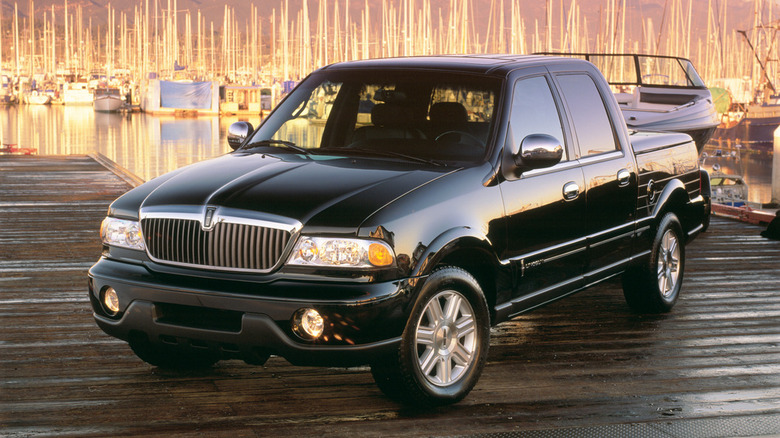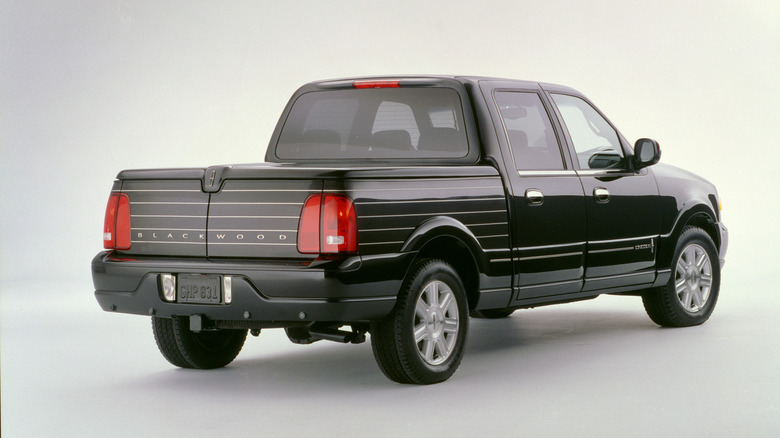The Reason The Lincoln Blackwood Was A Failure
Trucks designed for luxury are commonplace nowadays, but there was a time when that wasn't the case. Posh versions of pickups are a relatively new phenomenon, only showing up on the market in significant numbers in the early 2000s.
Over 20 years ago, most pickup trucks were utilitarian in nature. Take a look at any truck more than a couple of decades old and you'll notice the lack of features. Even higher trim levels only included the basics like power windows, locks, and maybe a CD/cassette player. Those features are standards on the vast majority of vehicles today. There were few, if any, luxury options offered on trucks. That's a far cry from today where a High Country Silverado or King Ranch F-150 is more like a yacht than a work truck.
Ford saw an opportunity in the market — take the wildly popular F-150 and have the Lincoln division work its luxury magic. The result was the Lincoln Blackwood. And although it would unknowingly start a craze, it was an objective failure, lasting for only one model year in 2002. That disaster was almost entirely self-inflicted.
A landmark in luxury
If Ford was the only automaker around, the Lincoln Blackwood would more than likely be a huge success and they'd probably still be making some variation of it today. By itself, the truck was well-appointed and offered a driving experience that was well above the proletariat's F-150. It bore the Lincoln name and rode like a grandfather's Continental. According to MotorTrend, the Blackwood even borrowed steering components from the Crown Victoria.
On the styling front, the Blackwood looks more like the preferred vehicle of a funeral director than a mass-market luxury truck, but that can be attributed to Lincoln's more grim and muted stylistic choices of the time.
Seemingly unbeknownst to Ford, other luxury trucks were showing up on the scene in the early 2000s. The Blackwood is fine by itself, but it immediately falls apart when put up against any kind of competitive scrutiny. General Motors, for one, would attempt to outclass the Blackwood, and even Ford's own F-150 could be to blame for pushing the Blackwood into obscurity.
Competition from Cadillac
In 2001, GM unveiled both the Chevy Avalanche and Cadillac Escalade EXT trucks. For the Avalanche, Chevy went with a four-door and short bed configuration that focused more on driver comfort than serious utility. The EXT was built on the same platform and looked like an Escalade that lost a fight with a reciprocating saw. It was the automotive equivalent of a mullet — business in the front, party in the back.
Looks notwithstanding, the EXT beat the Blackwood at its own game. For one, it offered four-wheel drive, an option that was conspicuously absent on the Blackwood. It was also cheaper. The EXT was priced at a hair under $50,000. The Blackwood started at $52,000. The Blackwood had its own Lincoln-designed 300-horsepower 5.4L V8, and the Caddy beat it with a 6.0L 345-horsepower V8. Even Ford's own pseudo-luxury F-150 King Ranch beat out the Blackwood by almost $20,000, and that model offered four-wheel drive.
In the end, it was a numbers game. For everything the Blackwood offered, the Cadillac was more. Ford would quietly discontinue the Blackwood after a single year of production. The EXT continued lumbering on until 2013.


